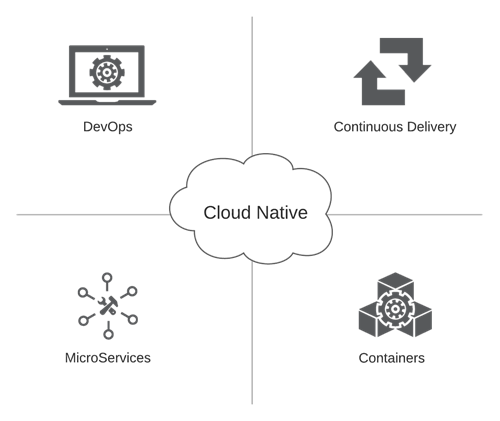Co-founder and a Managing Partner at CSW Solutions. You can find Yoel on LinkedIn and Twitter.
Cloud native applications are software applications that were designed and built for a cloud computing architecture. These applications are run and hosted in the cloud and are designed to exploit the flexibility, scalability, and resilience of the cloud computing platform. With the exponential migration to the cloud in recent years, cloud native technologies empower software developers to use various tools and techniques for the public, private, and hybrid cloud as opposed to traditional architectures that rely the on-premises data center.

Microservices are an architectural approach of software development where an application is broken down into a series of independent modules or services. The communication between each service or module is done via application program interfaces (APIs). Microservices allow each core function or service to be be built and deployed independently, thus accelerating time-to-market with scalability and innovation. This type of approach to development also means that the failure of one component does not disrupt the entire application.
Containers are a type of software package that isolates an application to allow independent operation on any infrastructure or environment. Just as shipping companies use different physical containers to transport on ships and trains, a software developer can bundle a cloud native application's code together with the related configuration files, libraries, and dependencies required for the app to run. Containerization provides the most reliable method in seamless deployment of applications across environments without modifications.
This is a software delivery approach where software development teams produce and test code in short but continuous cycles. The process focuses on building, testing, configuring, and deploy from a build to a production environment. Without continuous delivery, software release cycles can create a bottleneck for application and operations teams. Manual processes can lead to even more unreliable releases that produce delays and errors that could have been easily avoided.
This methodology promotes improved communications and collaboration between the software development and operations teams. DevOps allows previously compartmentalized disciplines like development, IT operations, quality engineering, and security to interact and coordinate to create more reliable products. Teams may respond better to customer requests, boost confidence in the apps they produce, and achieve business goals faster by adopting a DevOps culture and using DevOps principles and tools.

Source: Microsoft
Azure includes a wide range of built-in tools and services for cloud native app development. We are just going to go over the services and tools that are good options to start with. For a full list, check out Microsoft’s Developer’s Guide to Azure.
Azure includes two main tools for developing and building cloud native applications:
Visual Studio and Azure App Services.
Visual Studio is a development environment (IDE) that can be used for any platform or environment, or any type of software development. It enables the development, debug, deploy, and monitoring of applications for and into the cloud or on-premises.
Azure App Services is a subscription-based Platform as a Service (PaaS) that enables development of applications mainly for web and mobile clients. It provides a fully managed cloud infrastructure that lets you deploy apps in containers or directly as code. The Azure App Service also includes some pre-built apps that can be used as the initial base for your app creation. It supports popular frameworks and languages, including .NET, Java, Python, PHP, Node.js, and Ruby.
When creating cloud native applications on Azure, there are a variety of storage options to choose from. Any of the standard storage services, such as disk, file, queue, table, or blob, can be used to store and retrieve data. You can also use database services to connect your application. Pay-per-use database services for structured, semi-structured, and relational data are available in Azure. All database services are fully managed with security and performance optimization capabilities built-in as well as automatic geographic data replication.
As we mentioned earlier, containers are used to deploy cloud native applications on the cloud. Azure Kubernetes Service (AKS) or Azure Container Instances can be used to execute and manage containerized applications (ACI). Azure Functions can be used to run serverless apps.
AKS is a free, fully managed service for deploying and managing Kubernetes containers. This service is powered by Virtual Machines (VMs), which are different from containers and must be configured and managed. Azure DevOps also mean you are able to have a Continuous Integration/Continuous Delivery (CI/CD) pipeline built in. This service also works with Visual Studio Code to make development and deployment easier.
With Azure Functions, you can develop code snippets or full apps and run them without the need for dedicated instances or resources. Your programs would then run in response to HTTP requests, Azure cloud service events, or a set schedule. The app can interface with Azure and third-party services via API with Azure Functions and can be written in.NET, JavaScript, and Java.
In conclusion, cloud native applications and its related technologies are on the rise with their reliability, automation, and resilience and are predicted to be the future of software development. Our team at CSW Solutions can help you do so by transitioning to a cloud-centric paradigm and removing any obstacles for companies trying to go cloud native. Give us a call today and talk to a native cloud expert!